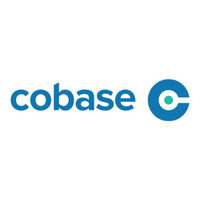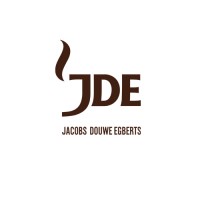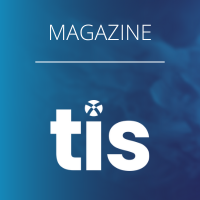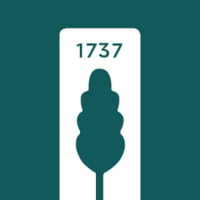This ranges from large-scale fund transfers and managing payroll to supplier payments, single purchases, and recurring salary payments. Consequently, a comprehensive understanding of various corporate payment systems and transaction types is vital. In this in-depth guide, we delve into these payment systems and types, shedding light on their distinguishing features, variations across different banks and countries, and essential considerations for corporate treasurers.
Diverse Corporate Payment Systems: A closer look
Corporations often deal with multiple payment systems that facilitate their monetary transactions. Here’s an in-depth look at the most common systems:
- Wire Transfers: Wire transfers offer real-time electronic transfer of funds for both domestic and international transactions. They typically utilize the SWIFT network for international transactions, while domestically, countries have their own interbank network systems. For instance, the US uses FedWire, and the UK uses CHAPS. Treasurers should consider the speed and security of wire transfers but also be aware of the relatively high transaction fees.
- SEPA (Single Euro Payments Area): A pan-European initiative, SEPA streamlines Euro payments across Europe. Businesses can make non-urgent Euro transfers under uniform conditions, rights, and obligations. Treasurers in European businesses should take advantage of the simplicity and uniformity of SEPA for Euro transactions.
- ACH (Automated Clearing House): Predominantly used in the United States, the ACH network allows electronic funds transfers between banks. It’s often used for payroll, direct deposit, tax refunds, and consumer bills. For treasurers, ACH provides a cost-effective solution for regular, non-urgent payments.
- BACS (Bankers’ Automated Clearing Services): A UK-centric system, BACS allows direct debit and credit payments between bank accounts. It’s common for salary deposits, pensions, state benefits, tax credits, and supplier payments. The low cost and high efficiency of BACS can make it an attractive option for UK treasurers.
- CHIPS (Clearing House Interbank Payments System): CHIPS is a US-based system mainly used for high-value domestic and international transactions. It is one of the world’s largest payment systems, and treasurers often use it for large, time-sensitive transactions.
While these systems may seem standard, each bank often implements these systems differently, influenced by local regulations, unique banking environments, and technological capabilities. Treasurers need to work closely with their respective banks to understand these subtle differences and determine the most efficient and cost-effective payment methods.
Understanding Various Payment Types: What Treasurers Need to Know
On top of diverse payment systems, corporations also have to navigate various payment types. Here’s a closer look:
- Single Payments: These are standalone transactions for individual purchases or services. While they are typically straightforward, treasurers must ensure they have robust tracking and record-keeping systems in place for such payments.
- Batch Payments: Batch payments are a collection of multiple payments processed simultaneously, ideal when handling high volumes of transactions. Treasurers should understand the nuances between true batch payments (processed together at a set time) and false batch payments (collected over a period but processed individually).
- Salary Payments: These are recurring batch payments made by businesses to their employees. They often involve complex calculations, including tax, benefits, bonuses, and deductions. For treasurers, integrating a reliable payroll system or partnering with a payroll service provider can ensure accurate and timely salary payments.
- Direct Debits: Direct debits are payments made from one bank account to another, authorized by the account holder. Treaurers should ensure that the setup for recurring payments is secure and reliable, especially for bill payments, loan repayments, or subscription services.
- Cheques: Despite the rise of digital payments, cheques remain a widely accepted payment method. They provide a paper trail and are often used for large transactions where additional payment security is required. However, they do require more manual processing and have slower settlement times, which treasurers should factor into their payment strategies.
- Urgent and Non-Urgent Payments: Urgent payments, or expedited payments, are used when funds need to be transferred quickly. However, these come with higher processing fees. Non-urgent payments follow standard processing timelines and are usually more cost-effective. Treasurers need to balance the cost and urgency of transactions, using urgent payments sparingly to manage costs effectively.
Understanding these payment types, each with its strengths and use cases, is vital for corporate treasurers. They must strike a balance between cost, efficiency, security, and convenience, adapting their strategies to the evolving digital landscape.
Differences Across Banks and Countries: An Extra Layer of Complexity
Corporate payment systems can vary significantly, not only between different banks but also across countries. This adds an extra layer of complexity for corporate treasurers.
Banks often implement payment systems with subtle differences. For instance, Bank of America’s wire transfers might offer different currency options compared to HSBC or Deutsche Bank due to their respective international footprints and alliances. This diversity can also extend to the level of automation, integration, and digital banking capabilities offered by each bank. Corporate treasurers should work closely with their bank partners to understand these differences and select the best options that align with their business needs.
Countries also have distinct banking and financial infrastructures that influence corporate payment systems. For example, while the US uses the ACH system for domestic electronic funds transfers, the UK uses BACS for similar transactions. Treasurers should be aware of these country-specific systems when managing cross-border transactions.
Even within the same bank, there may be differences in how these systems operate in different countries due to the local banking environment and regulations. For example, HSBC may offer real-time processing of ACH payments in the U.S., while in the UK, it might focus more on optimizing its BACS transaction features. This requires corporate treasurers to stay abreast of changes in the banking landscape, both locally and globally.
In Conclusion
For corporate treasurers, navigating the myriad of corporate payment systems and transaction types can be a complex task, requiring a deep understanding of their unique features, strengths, and weaknesses. In the dynamic global economy, it is crucial for treasurers to stay informed about the evolving landscape of payment systems and adapt their strategies accordingly.
Indeed, handling these complexities can be time-consuming. However, platforms like Cobase have been designed to streamline this process, handling the diverse technical requirements of multiple payment systems on behalf of businesses. This allows corporate treasurers to focus on what truly matters – managing their corporate treasury efficiently and driving business growth in a global marketplace.














